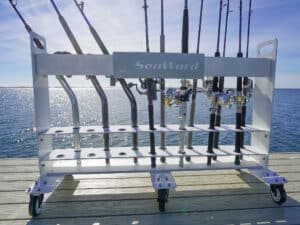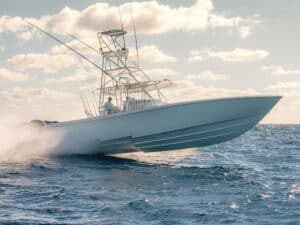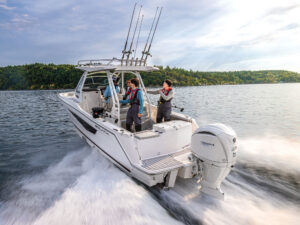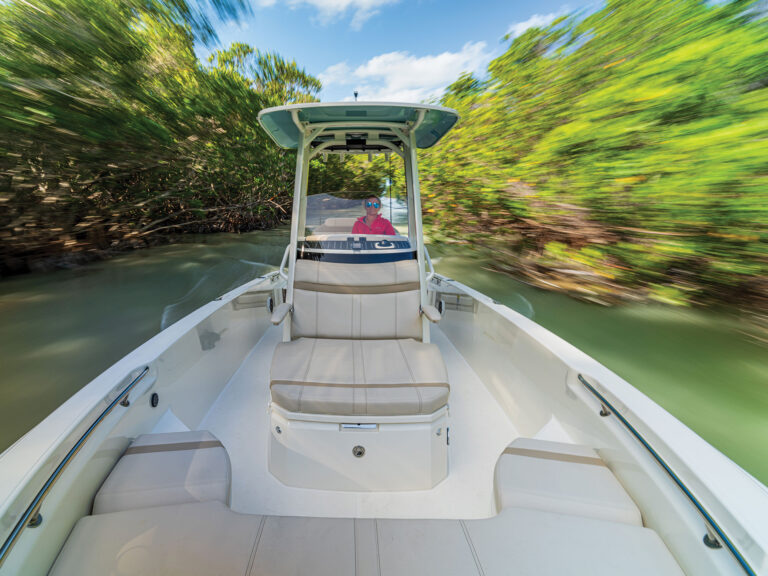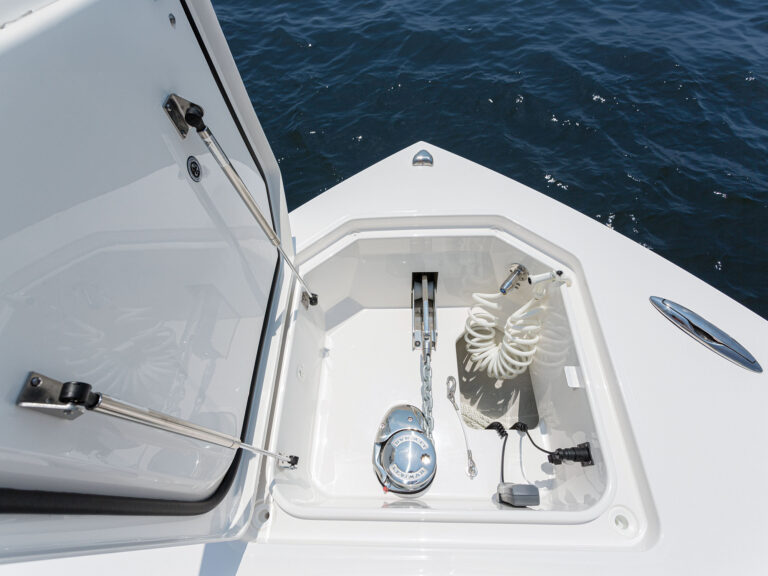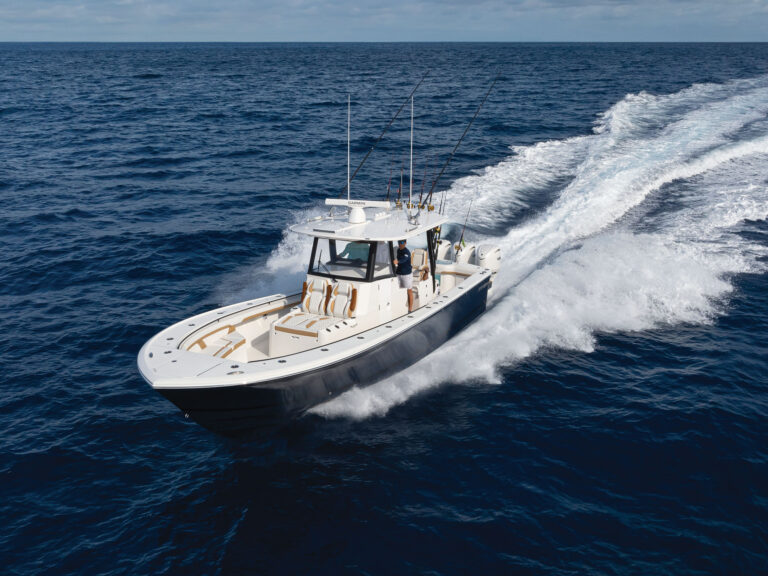
Saltwater anglers invest a small fortune (and many of us even staggering ones!) in fishing tackle, more specifically in rods and reels. Surprisingly, just a small percentage will go the extra mile and provide the TLC these outfits need to perform flawlessly season after season. Given the price tags on some of the more sophisticated reels and rods, I’m astounded when I see such gear banging against the gunwales of a boat, getting doused with salt water, being washed and stored improperly, or getting spooled up with old and compromised fishing line.
Following is a tackle-care list I adhere to whether I’m crossing to the Bahamas or chasing inshore game fish a couple of miles from the boat ramp. Practice these tips, and you can be confident your tackle will be in perfect shape to handle anything a trophy fish can dish out.
Scrub-A-Dub-Dub
The proper way to wash a reel at the end of the day has always made for great debate. That being said, the late Dean Hicks – a former Fort Myers, Florida, tackle-shop and reel repair-center owner – took such a chore personally. Dean O, as he was affectionately called, had cleaned and repaired thousands of reels in his day, and he’d come up with bulletproof techniques for cleaning and caring for reels.
Dean O warned you should never use of any kind of pressure when rinsing reels, like aiming a hose or spray nozzle directly at a reel; this forces salt, sand and dirt into the reel. Instead, he recommended a simple and very light freshwater rinse at the end of each fishing trip. This goes for the rods, guides and reel seats. After rinsing and drying a reel, Dean O applied a light coat of lubricant to the reel and its components. And since many products can break down the properties of fishing line, he had his three favorites: Super Slick Slick Stuff, Reel Magic and CorrosionX. Although with the last, he advised using it sparingly and with great care, as it can damage some reel finishes and rubber seals.
One final tip on rinsing reels: Advance the drags – especially on spinning reels – which will prevent water from seeping into these systems. It’s also wise to hold a spinning reel upside down (drag toward the ground) when rinsing, giving water even less of an opportunity to invade the reel. Then, when the reels have been dried and wiped down with a lubricant, back off the drags to store the outfits.

Best “Pickup” Lines
As a general rule, I replace my fishing line after any long, stressful encounter with a powerful fish. That’s because the properties of the line were likely compromised during the bout. Outside of that, I monitor the “spin finish” on the line, which gives it its sheen. Once that begins to fade and the line isn’t feeling as supple as when it was new, I’ll change it out. Like maintaining a reel, keeping your fishing line fresh is critical to your success. A worn line might do just fine when bailing small school fish only to fail on a large, powerful fish.
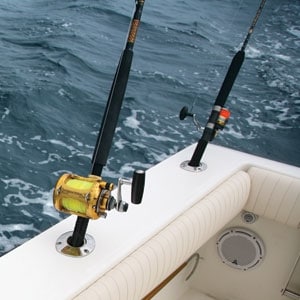
Gunwale Rod No-Nos
Running through rough seas with outfits in above-gunwale holders is one of the worst things you can do to your reels, particularly if they’re drenched with salt water by each big wave. Granted, quality offshore reels are made to withstand this type of abuse, but why press the issue? It only stands to reason that if a reel is drenched continuously over a considerable period of time (like a four-hour run to a canyon), some salt will find its way into the system.
If above-gunwale rod holders are all you have, that’s one thing. But at least move the outfits from the boat’s “wet” side to any under-the-gunwale racks, or at the very least, use reel covers to block the spray.
And for trailer boaters: Don’t tow with your rods in topside gunwale holders. I’ve heard far too many stories about fishermen getting their rods ripped off the boat while stopped at a traffic light! Think about it: Such outfits are easy pickings for an on-foot thief or someone in a car heading the opposite direction (I’ve heard both accounts). And what are you going to do about it? Make a sharp U-turn with your rig and give pursuit?

Under the Gunwales
This is the predominant rod-storage area on a lot of small and midsize boats. When I set forth for an extended trip to the Bahamas, where I take a lot of different outfits, I’ll rack the heavier (trolling) gear under the gunwales. By doing so, I’ll have only the lighter spinning and conventional outfits in my T-top holders, which put little, if any, stress up there.
I’ll make sure when I’m racking rods under the gunwales that the reels won’t bang against each other. Ditto for the rods. I’ll use a towel or a sponge to cushion the reels on these long runs so they won’t rub and vibrate or even bang against the boat. It’s the same for their rods. Protective reel covers also offer excellent protection here.

Hey, Watch Those Rods!
The highly sensitive and ultra-strong composite rods, which are fast gaining popularity, demand extra care to prevent damage to the blanks. I don’t mean from their getting rolled up in a car window or slammed in a car door, but rather from something as unapparent as having a jig vibrate or bang against the rod blank while you’re running to and from the fishing grounds. Little things like this, along with the way rods are racked (outlined previously), make a big difference in their life span.
For example, let’s say we have a bucktail jig secured to the guide frame on a graphite or composite rod. During the run to the fishing grounds in bumpy seas, the jig vibrates and frequently taps the rod blank. It is feasible that the rod blank now has a minute and nearly invisible nick in it from the jig. If that nick isn’t along a critical spot on the rod, chances are nothing will happen to it. However, if the heat is put to a big fish and that nick is along a pressure spot on the rod, the blank can snap.
Therefore, when securing jigs, lures and hooks, avoid the rod guides entirely. Affix them to the reel seat, the hook-attachment points that manufacturers are now designing onto the reel seats, or even onto rod foregrips. And to make certain a jig, lure or hook remains tightly secured, wrap the fishing line two or three times around the rod and guides. This should prevent it from loosening up during transit.
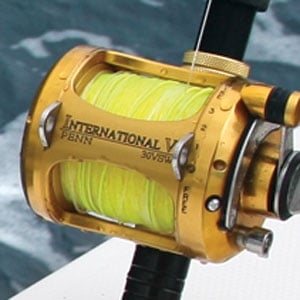
Doctor’s Appointment
Another issue open to debate is how often to service a reel. Just because an angler plunks down $500 for a quality trolling reel, for example, doesn’t mean the reel never has to be serviced. If you purchased a $50,000 SUV to trailer your boat, would you assume because you paid that much that the vehicle would never need an oil change or servicing? Quite the contrary. You would go to all lengths to protect that investment. Why should your reels be any different?
As a rule of thumb, reels should be brought to an authorized reel-repair center at least once a year, and perhaps twice if those reels are under heavy use, like on busy charter boats. This should entail a full overhaul, cleaning and lubrication.

Stow Them Smartly
Some of the best and least-utilized tackle-care items are rod bungees. In my opinion, these should be standard equipment on all new boats sold with T-top-based rod holders. Rod bungees serve two purposes. First, they prevent rods from being launched from the holders in rough seas, which can injure someone, or cost you a bundle if one goes overboard. All it takes is a single big wave and a little extra speed to launch your boat into the air. And that’s when rods will likely get pitched from their holders.
Second, bungees keep the outfits secure so they are less susceptible to vibrating and bouncing around, which can loosen screws and beat up reels and reel seats.
It takes me about two seconds to secure the assigned bungee to each rod in my T-top holders. And when we reach the fishing grounds, I simply remove the bungees and the rods are accessible.
Again, adhering to these tips will undoubtedly get you the maximum amount of life and optimum per-formance from your reels and rods. It will cost you only a few extra minutes of your time and a few extra dollars at the end of the season, but you will come out years ahead in satisfaction – and big fish catches.


